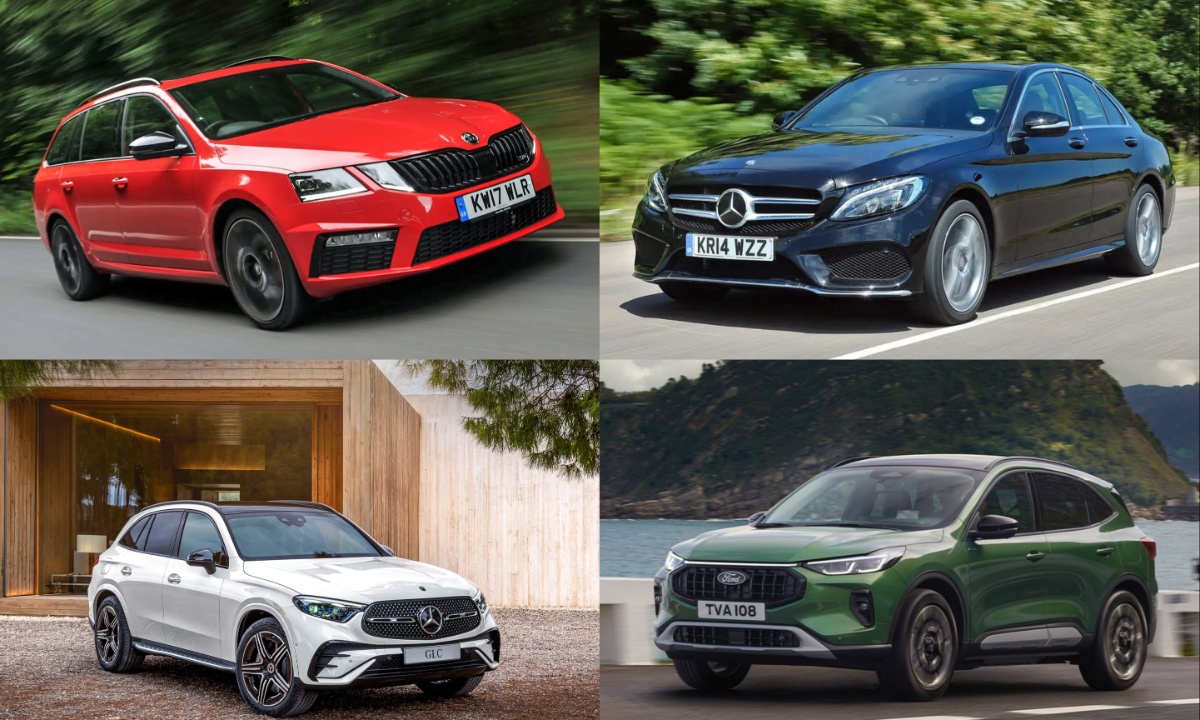A survey of 6,000 car owners has identified the 10 least reliable models, with some surprising entries from premium brands. Owners rated their vehicles across key areas, and these models received the lowest average reliability scores. Each car on the list had at least 20 individual submissions, highlighting consistent issues reported by drivers. Read on to see which vehicles have been the most problematic.
10. Mercedes-Benz GLC (2015 – 2022)
Rating: 8.52
The Mercedes-Benz GLC faces stiff competition in the premium SUV market from rivals like the BMW X3 and Audi Q5. However, it holds its ground with high-quality interiors, advanced technology, and a wide range of engine options, from efficient diesels to high-performance AMG models.
Standard four-wheel drive enhances its capability, even for off-road adventures, though a firm ride on some versions and a complex trim lineup are drawbacks. Positioned between the GLB and GLE in the Mercedes SUV range, the GLC aims to attract buyers with its luxurious appeal while offering both standard and coupe body styles for added variety.
The GLC delivers a refined driving experience with a nine-speed automatic gearbox as standard, ensuring smooth shifts and enhanced comfort. Diesel engines dominate the lineup, with the GLC 220d being a popular choice and the more powerful GLC 300d offering additional performance with minimal fuel economy compromise.
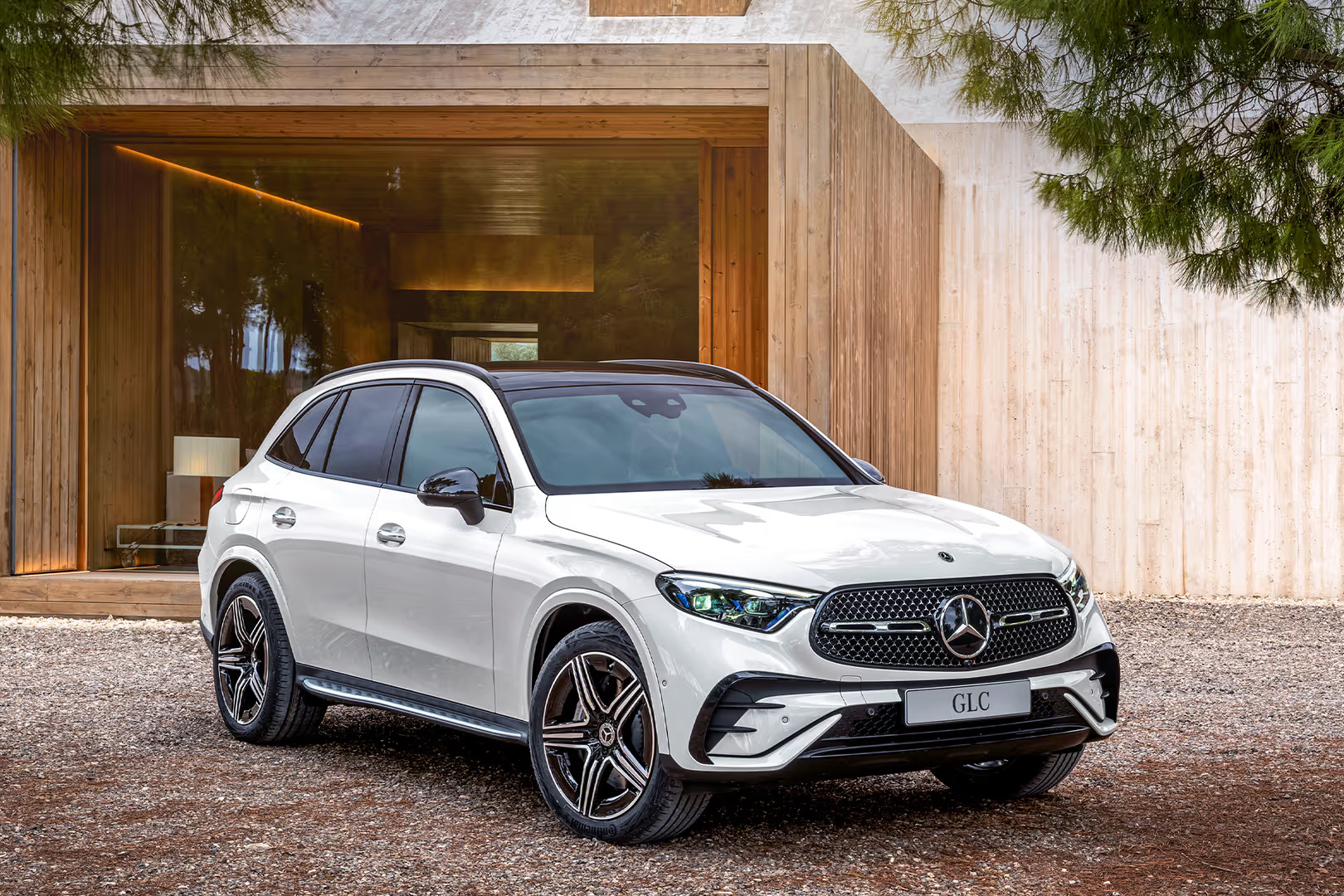
Petrol versions are less efficient, particularly the high-performance AMG GLC 63 S, which prioritizes power over economy. A unique diesel plug-in hybrid, the GLC 300 de, provides an impressive fuel efficiency of 148.7 mpg and an electric-only range of up to 27 miles, making it an attractive option for eco-conscious buyers.
Inside, the GLC boasts a tech-laden cabin featuring the Mercedes-Benz User Experience (MBUX) multimedia system, which allows voice-activated controls for various functions. Even the base Sport model comes well-equipped with LED headlights, heated front seats, and climate control, though the higher AMG Line trims add sportier features at the cost of ride comfort.
Practicality is also a strong point, with 550 liters of cargo space matching its key rivals and ample room for four adults. Despite its premium positioning, the GLC successfully balances luxury, technology, and practicality, making it a compelling choice in the competitive SUV segment.
9. Peugeot 3008
Rating: 8.61
The Peugeot 3008 made a bold entrance into the family SUV market in 2017, setting new standards with its stylish design, premium cabin, and advanced technology. It outshone competitors like the Nissan Qashqai, proving that practicality and aesthetics could go hand in hand.
However, with the arrival of newer rivals like the Hyundai Tucson, Kia Sportage, and Ford Kuga, Peugeot has refreshed the 3008 with updated styling and improved technology. While the frameless grille adds a striking touch, changes to the rear are minimal, but its distinctive design still stands out among competitors like the Vauxhall Grandland.
Inside, the 3008 remains a strong contender with its smart design and high-quality materials, now featuring fresh trims and a larger infotainment system. The unique ‘iCockpit’ driving position remains, which some drivers may find unconventional. While the SUV remains practical with a 520-liter boot, newer competitors offer more spacious interiors, and the optional panoramic sunroof reduces headroom.
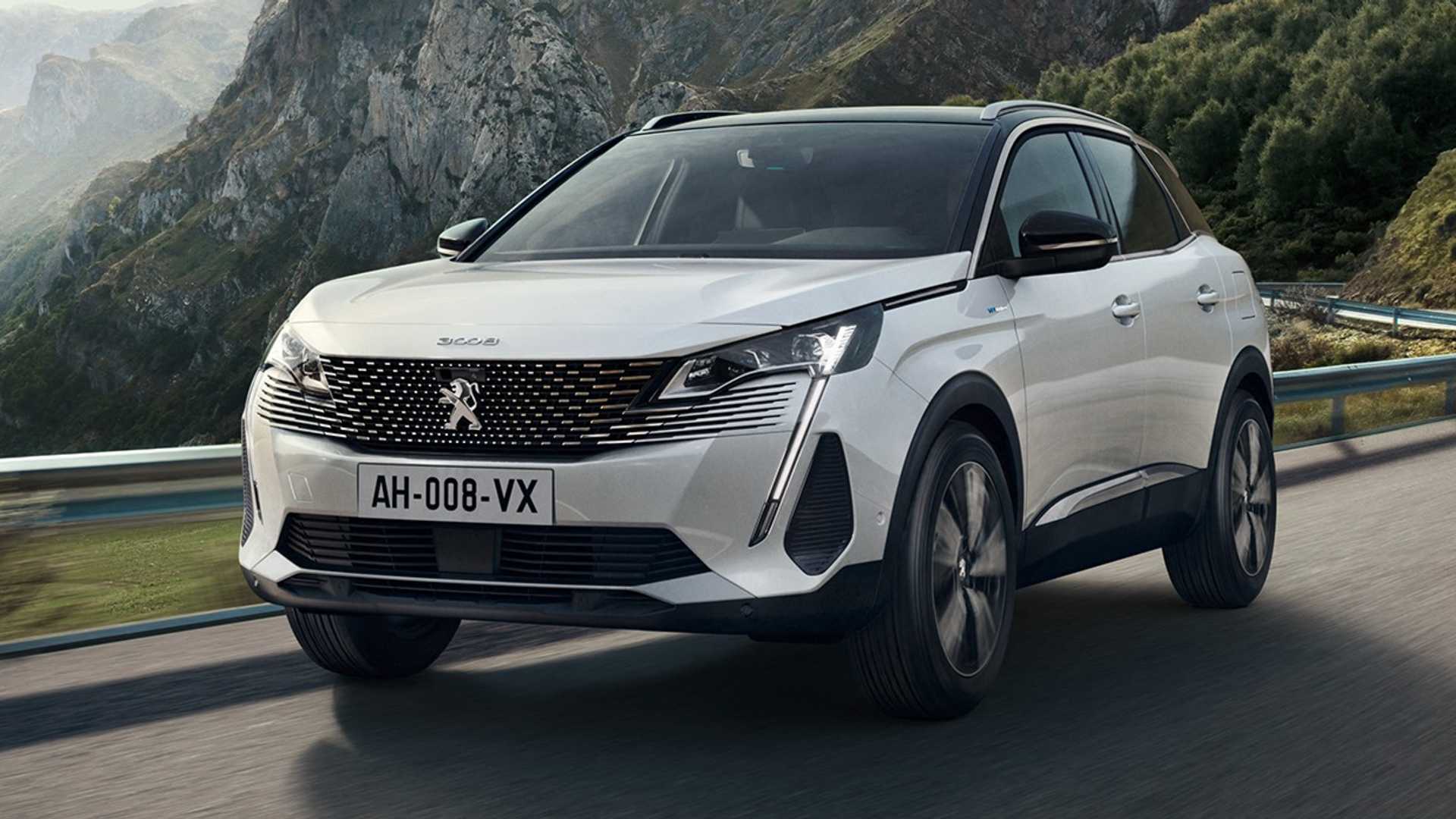
The engine lineup has evolved, with the 1.2 PureTech petrol now being the best choice for its balance of performance and efficiency. Plug-in hybrid models introduced in 2020 boast impressive fuel economy and an electric range of 36 miles, though the four-wheel-drive version is notably expensive.
On the road, the 3008 delivers a refined driving experience with a quiet cabin, responsive handling, and well-controlled body roll. Despite lacking a traditional all-wheel-drive system, it maintains strong traction. Standard features across the range include a digital instrument cluster, a touchscreen with Apple CarPlay and Android Auto, and safety systems like autonomous emergency braking.
Though priced slightly higher than some competitors, the 3008 justifies the cost with its premium feel and generous equipment. With its blend of style, technology, and driving dynamics, the Peugeot 3008 remains a compelling choice in the SUV segment.
8. Ford Kuga
Rating: 8.70
The third-generation Ford Kuga has undergone a significant transformation, making it one of the top contenders in the family SUV market. Unlike its predecessor, which struggled against rivals, the latest Kuga is designed to compete with models like the Volkswagen Tiguan, Honda CR-V, and Toyota RAV4.
Initially launched with petrol, diesel, hybrid, and plug-in hybrid options, Ford has since phased out the diesel engine, shifting its focus toward electrified powertrains. The plug-in hybrid variant, offering up to 35 miles of electric-only range, is particularly appealing for drivers who make frequent short trips, although the added battery weight can affect fuel economy on longer journeys.
The Kuga’s exterior has been redesigned with influences from other Ford models, such as the Puma and Focus, giving it a sleeker and more modern appearance. Its larger dimensions make it well-suited for family life, offering a spacious cabin with a sliding rear bench seat that enhances versatility.
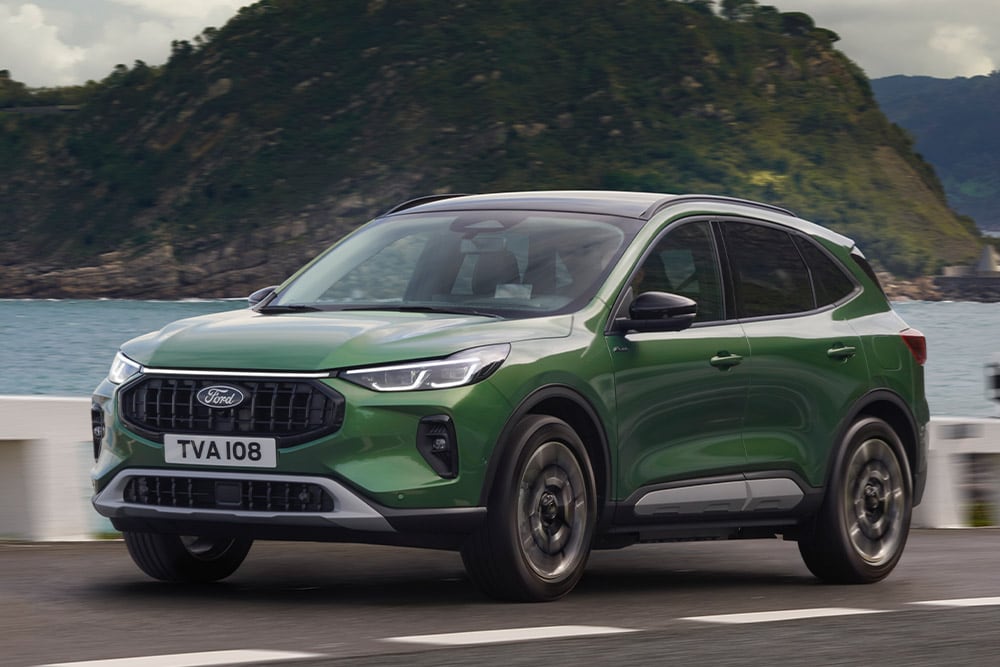
Rear passengers get ample legroom, and while boot space isn’t class-leading, it remains practical enough for family road trips, with up to 645 liters of cargo capacity (reduced to 581 liters in the plug-in hybrid version). Whether transporting luggage, bicycles, or everyday essentials, the Kuga proves to be a capable and accommodating SUV.
Inside, the Kuga features Ford’s SYNC 3 infotainment system, which may appear dated compared to some rivals, but standard Apple CarPlay and Android Auto help keep it user-friendly. The inclusion of physical controls on the dashboard makes adjusting settings while driving easier compared to touch-only interfaces.
Available in multiple trims, including Zetec, Titanium, ST-Line, and the luxury-focused Vignale, the Kuga caters to a wide range of buyers. The ST-Line trim stands out as a strong choice, offering a well-equipped package with a sportier design. With its blend of practicality, stylish design, and hybrid efficiency, the latest Kuga is a compelling option in the competitive SUV market.
7. Land Rover Discovery Sport
Rating: 8.91
The Land Rover Discovery Sport carries a prestigious badge, making it a desirable choice in the mid-size SUV market. However, with strong competition from models like the Audi Q5, BMW X3, Honda CR-V, and Volvo XC60, it no longer leads the pack.
Styling updates and mild hybrid technology have helped keep it relevant, but newer rivals, including the Tesla Model Y and Volkswagen Tiguan, offer compelling alternatives. Despite this, the Discovery Sport retains key strengths, including a spacious interior, a composed ride, and a practical 5+2 seating configuration, making it a solid family SUV.
Inside, the Discovery Sport features high-quality materials, a well-crafted dashboard, and an impressive amount of standard equipment. Climate control for the first two rows, cruise control, a heated windscreen, and partial leather seats come as standard across all trims.
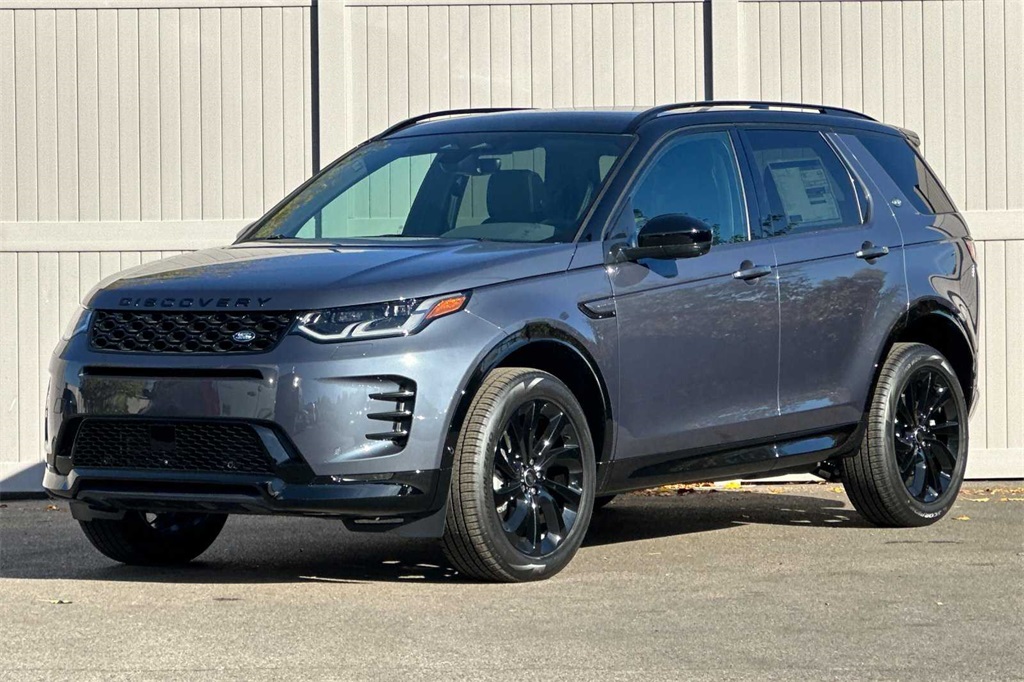
Power options include 2.0-liter petrol and diesel engines with mild hybrid assistance, while the plug-in hybrid P300e offers a powerful 309PS, up to 181.1mpg, and an electric-only range of 37 miles. While this PHEV version delivers strong performance and efficiency, it is best suited for drivers who can charge frequently or make shorter trips.
On the road, the Discovery Sport offers a refined and capable driving experience, with plenty of grip in corners and a smooth automatic gearbox. Its four-wheel-drive system, shared with the Range Rover Evoque and enhanced by Land Rover’s Terrain Response system, ensures it excels in off-road conditions, outperforming most rivals in mud or snow.
While its starting price of nearly £45,000 might seem steep, it remains competitive within its segment, offering a blend of luxury, practicality, and off-road capability that few rivals can match.
6. Skoda Octavia (2013-2020)
Rating: 8.91
The Skoda Octavia built on the brand’s reputation for delivering quality and practicality when it was introduced in 2013. Competing against well-established rivals like the Volkswagen Passat, Ford Mondeo, and Mazda 6, the Octavia stood out as a practical family hatchback that offered great value for money.
Sticking to the formula that made previous versions successful, it delivered more space, better fuel economy, and improved technology, making it a popular choice among UK buyers.
While the exterior styling remained subtle and familiar, the new Octavia was both larger and lighter than its predecessor, shedding over 100kg to enhance fuel efficiency.
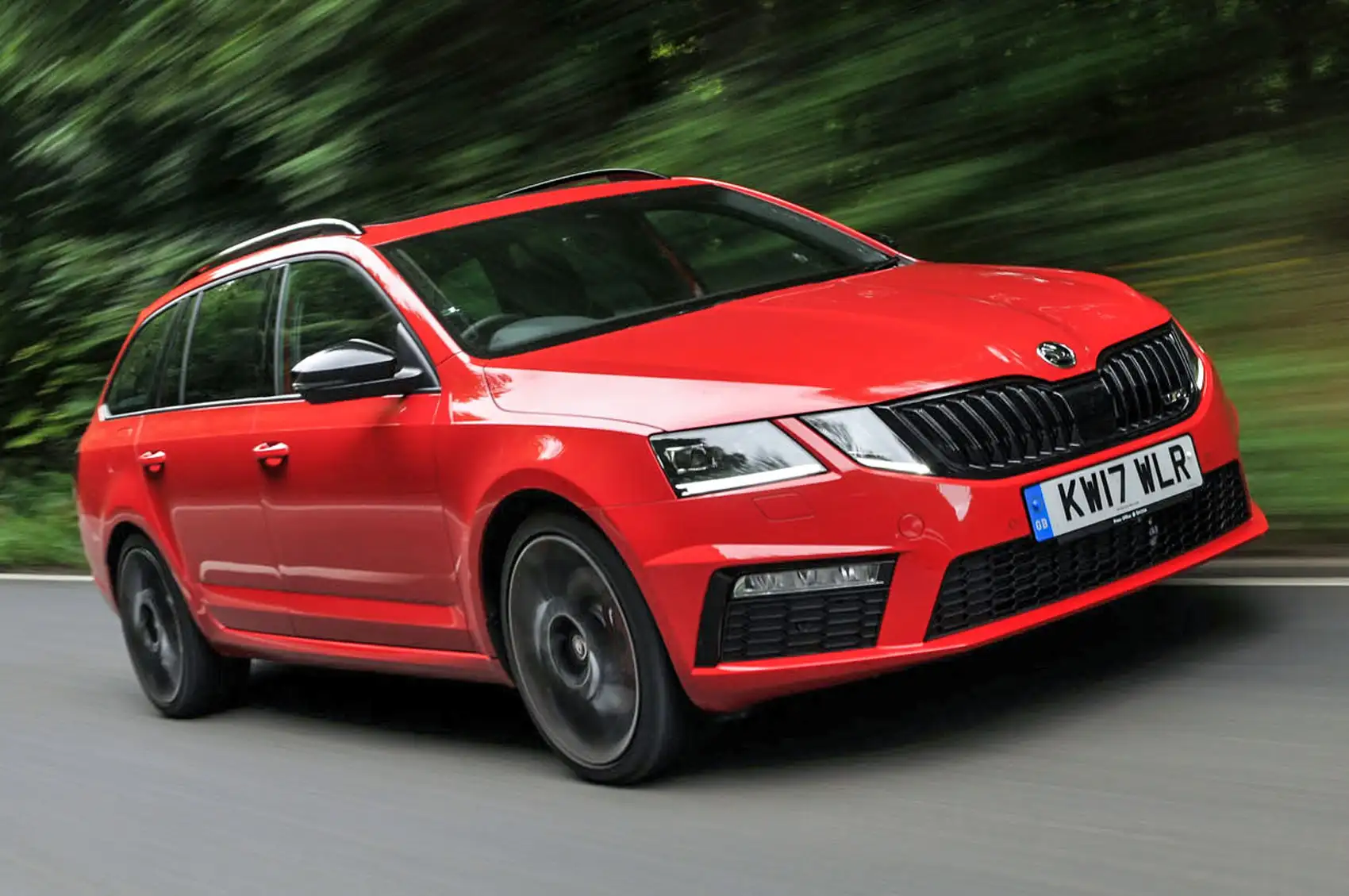
Skoda also introduced clever design features such as a built-in ice scraper, a reversible rubber boot carpet, and a door-pocket waste bin. The standout practicality of the Octavia was further emphasized by its class-leading 590-litre boot, providing ample storage space for families and long trips.
The Octavia launched with four engine options—two petrol and two diesel—sourced from the Volkswagen Group. The entry-level 1.2-litre petrol and 1.6-litre diesel both produced 105PS, while the more powerful 1.4-litre petrol delivered 140PS, later upgraded to a 1.5-litre version.
The most efficient choice was the 1.6 TDI, boasting CO2 emissions of just 99g/km and an impressive 74.3mpg fuel economy. Beyond fuel savings, the Octavia also offered lower insurance costs compared to its predecessor, further enhancing its appeal as a cost-effective yet premium-feeling family car.
Also Read: 10 Best Supercars for the Ultimate Driving Experience
5. Mercedes-Benz C-Class (2014-2021)
Rating: 9.05
The Mercedes-Benz C-Class has long been a staple in the premium small saloon market, offering a more accessible alternative to the flagship S-Class. The latest, fifth-generation model is the most advanced yet, featuring cutting-edge technology and a sleek, upscale design.
However, with the growing popularity of SUVs, the C-Class now faces competition not only from traditional rivals like the BMW 3 Series and Audi A4 but also from Mercedes’ own GLC and GLC Coupe. Despite these challenges, Mercedes-Benz remains committed to the C-Class, making it the first of its compact executive lineup to receive a generational update.
With a refreshed exterior and a high-tech interior inspired by the S-Class, the new C-Class sets itself apart from aging competitors like the Audi A4. Its cabin is modern and luxurious, featuring a large, portrait-oriented touchscreen and high-quality materials.
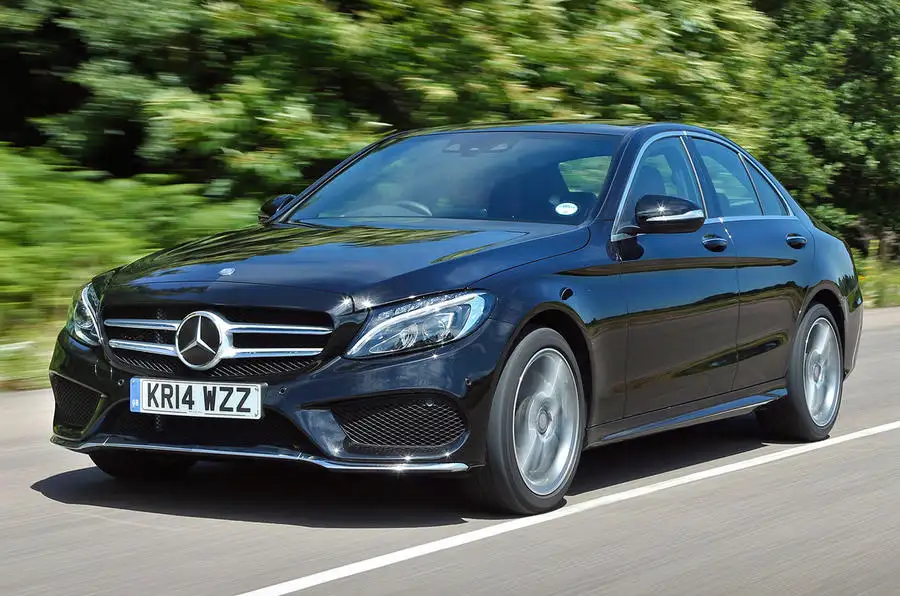
While it doesn’t offer the space of a full-size luxury sedan, it remains comfortable for four adults and their luggage. The focus is clearly on comfort rather than outright sportiness, meaning it lacks the sharp handling of a BMW 3 Series but excels at delivering a smooth and refined ride.
Under the hood, the 2022 C-Class provides a range of powertrain options to suit different preferences. Buyers can choose between petrol and diesel engines, including the plug-in hybrid C300e, which remains a popular choice for efficiency-conscious drivers.
Notably, even the performance-oriented AMG versions—C43 and C63—now feature four-cylinder engines, a move that may surprise some enthusiasts. While SUVs may be dominating the market, the latest C-Class proves that traditional luxury sedans still have plenty to offer.
4. Nissan Qashqai (2014-2021)
Rating: 9.09
The Nissan Qashqai has long been the UK’s favorite SUV, with the second-generation model building on the success of the original. Launched in 2013 and updated in 2017, it remains one of the most recognizable cars on the road.
However, newer rivals like the Renault Kadjar, Skoda Karoq, and Peugeot 3008 have surpassed it in terms of space, value, and driving dynamics. Despite this, the Qashqai continues to dominate sales, thanks to strong brand recognition and attractive finance deals that make it accessible to a wide range of buyers.
Its enduring appeal also comes from the generous equipment levels across most trim levels. Mid-range N-Connecta and N-Tec models offer a good balance of features, while the top-spec Tekna and Tekna+ feel nearly premium.
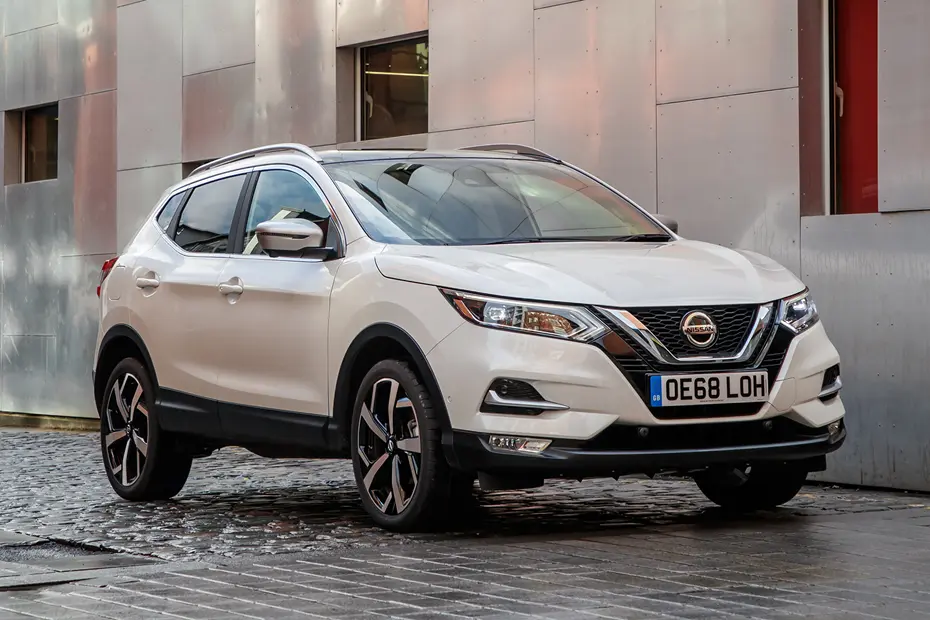
The engine lineup includes the efficient 1.5 dCi diesel for long-distance economy and the 1.3 TCe petrol, which is well-suited for city driving. Buyers also have the choice of different transmissions and optional four-wheel drive, catering to a variety of needs.
On the road, the Qashqai prioritizes comfort and ease of driving over excitement, making it ideal for everyday use. It handles predictably and rides well, though larger wheels can make it slightly less comfortable.
While it may not offer the most engaging drive, it remains a solid choice for those looking for a dependable, well-equipped, and affordable SUV. With used prices now dipping below £7,000, it also presents a strong value proposition for second-hand buyers, despite some concerns about long-term reliability.
3. Ford Fiesta
Rating: 9.12
The Ford Fiesta continues to be one of the most versatile and well-rounded small hatchbacks on the market, offering a broad range of trims, engines, and body styles to suit different drivers. Whether it’s the standard three- or five-door hatch, the performance-focused ST hot hatch, or the rugged Active version, there’s a Fiesta for everyone.
Despite maintaining nearly the same dimensions as its predecessor, the latest model feels more spacious and mature, making it an excellent choice for both first-time car buyers and those downsizing from a larger vehicle.
Competing in a fiercely contested segment against the likes of the Vauxhall Corsa, Volkswagen Polo, and Renault Clio, the Fiesta stands out with its refined ride, sharp handling, and well-balanced driving dynamics.
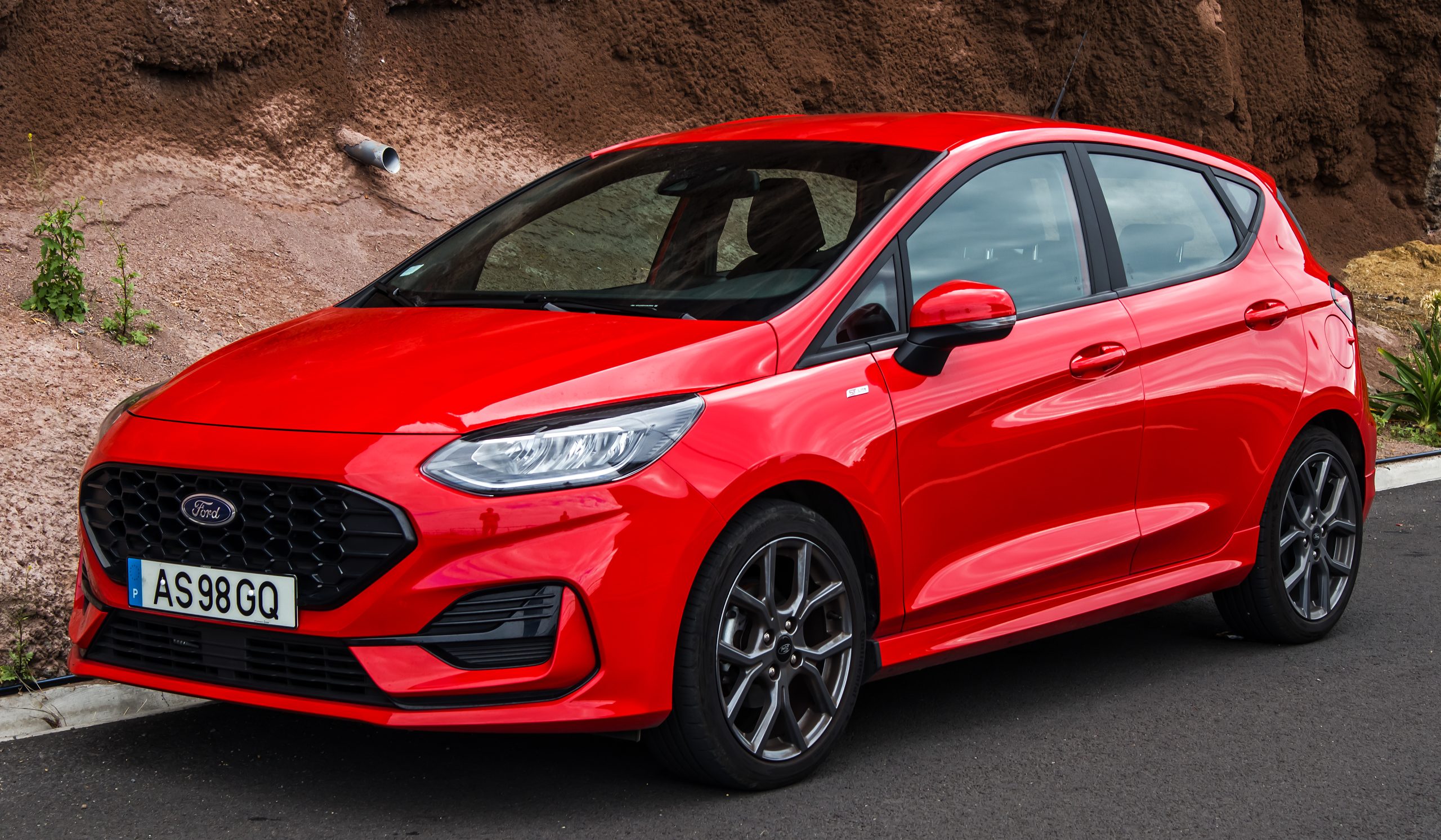
Its suspension setup varies across trims, with the ST-Line offering a sportier, firmer ride for enthusiasts, while the standard versions focus on comfort and everyday usability. Even in its most basic form, the Fiesta remains enjoyable to drive, with responsive steering and a quiet cabin that enhances long-distance comfort.
Under the hood, the Fiesta offers a selection of petrol and diesel engines, including the popular 1.0-litre EcoBoost units with outputs ranging from 100PS to 140PS. A 1.1-litre petrol and two 1.5-litre diesel options provide further variety, with most models equipped with a six-speed manual gearbox, while an automatic is available with the 100PS EcoBoost.
With a well-equipped interior, advanced infotainment, and safety features like lane departure warning as standard, the Fiesta continues to uphold its reputation as one of the most well-rounded and appealing small cars on the market.
2. Volvo V40 (2012-2019)
Rating: 9.13
The Volvo V40 is an appealing premium hatchback, offering a refined driving experience, efficient engines, and strong safety credentials. It replaced both the S40 and V50, positioning itself against the Audi A3, BMW 1 Series, and Mercedes A-Class.
Built on the Ford Focus platform, it delivers an excellent balance of comfort and agility, making it enjoyable to drive. Additionally, it was a pioneer in safety, being the first in its segment to include automatic emergency braking as standard, which set a new benchmark in the industry.
However, despite these strengths, the V40 struggled to keep up with its German rivals in key areas. One of its biggest weaknesses was its interior design, which carried over elements from older Volvo models, making it feel outdated even when new.
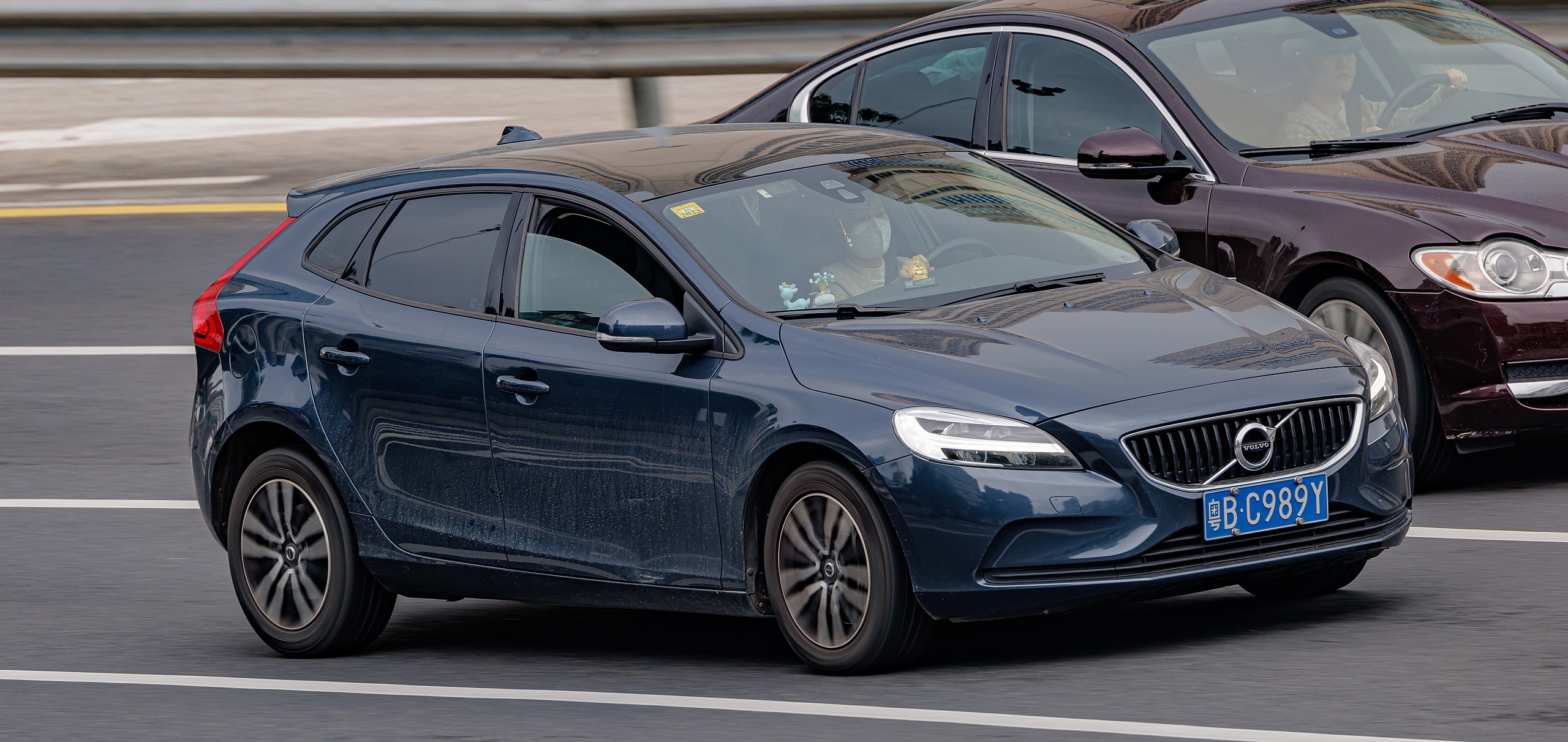
The ergonomics were not as refined as competitors, and the cabin lacked the modern, high-tech appeal seen in rivals like the BMW 1 Series. While the V40 offered plenty of standard luxury features, it failed to deliver the “wow factor” needed to stand out in a highly competitive segment.
As time went on, the gap between the V40 and its rivals widened further. Shortly after its launch, new versions of the Audi A3 and Mercedes A-Class arrived, boasting superior interior quality, cutting-edge technology, and more desirable designs.
This left the V40 feeling even more outdated, despite its strong safety features and driving dynamics. Ultimately, while the V40 remains a likable car with Scandinavian charm, it couldn’t quite match the relentless innovation and appeal of its German competitors.
1. BMW 3 Series
Rating: 9.20
The BMW 3 Series may no longer be the go-to choice for company car drivers or family buyers, with many opting for electric alternatives like the Tesla Model 3 or SUVs like the Volkswagen Tiguan. However, the latest version remains one of the best all-around saloons available.
With a wide range of engine options, including the refined and efficient 320i and 320d models, the 3 Series strikes a balance between performance and running costs. While there isn’t a fully electric version, the plug-in hybrid 330e offers an electric range of up to 38 miles, making it a practical choice for short commutes.
For those seeking extra performance, the M340i and M340d six-cylinder models provide thrilling acceleration and an engaging driving experience. The 3 Series continues to be one of the best-handling saloon cars, with precise steering, a dynamic rear-wheel-drive setup, and an optional xDrive all-wheel-drive system.
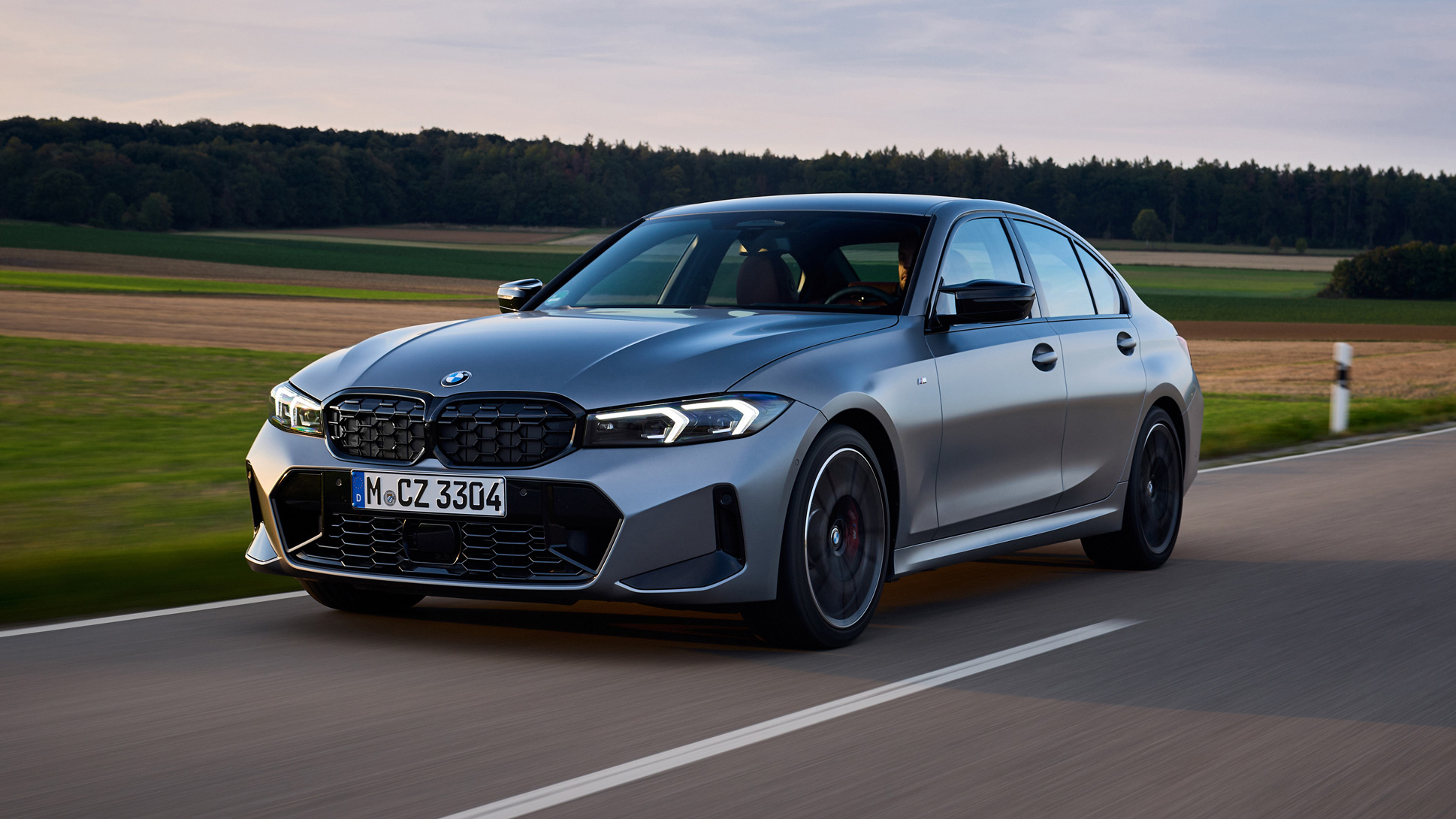
All versions now come with a smooth eight-speed automatic gearbox, further enhancing the car’s overall refinement. This blend of agility and comfort makes the 3 Series a pleasure to drive, whether in the city or on the open road.
Beyond its driving dynamics, the BMW 3 Series also boasts a premium and well-equipped interior. The post-2022 facelift models feature a modern curved dual-screen infotainment system, borrowed from the BMW iX and i4, while still retaining physical climate control buttons and the intuitive iDrive rotary controller.
Although the 480-litre boot is on par with competitors, those needing more space may prefer the BMW 3 Series Touring or the more practical and affordable Skoda Superb. Despite changing market trends, the BMW 3 Series remains a compelling choice for those who value performance, luxury, and driving enjoyment.
While premium brands may dominate headlines for luxury and performance, this survey highlights that reliability doesn’t always align with prestige. The inclusion of models from Mercedes-Benz, Land Rover, and BMW among the least reliable vehicles serves as a reminder that higher price tags don’t necessarily equate to fewer problems.
On the other hand, mainstream models like the Peugeot 3008 and Ford Kuga also made the list, proving that reliability concerns span across different market segments.
For car buyers, these rankings emphasize the importance of researching long-term ownership experiences rather than relying solely on brand reputation.
Whether you’re looking for an SUV, a hatchback, or a saloon, understanding common reliability issues can help you make a more informed decision. While no car is perfect, choosing a model with a strong track record for dependability could save you from costly repairs and unexpected headaches down the road.
Also Read: 10 Best Bang-for-the-Buck Performance Cars Right Now

